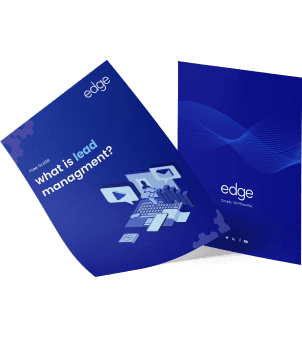The above topic is very interesting and important for any salesperson.
So to know how to build a Sales Pipeline, one must know what exactly a sales pipeline is.
What is a Sales Pipeline?
In the corporate world, salespeople take this word merely as a “buzzword” whereas they forget the importance of the sales pipeline.
In simple words, the sales pipeline gives an idea of where a person is going. It is a funnel and area in which you have to work on.
In today’s world, an inadequate sales pipeline is equivalent to a person driving to an unknown place without GPS. The person who makes optimum utilization of this tool will definitely reach its goal. It adds a layer of accountability and makes goals easier to achieve by breaking the sales process down into small, trackable tasks.
Elaborately, it is nothing but data of potential buyers where you can track their progress through different stages in the purchasing process. In a sales funnel, a salesperson qualifies the prospects after research and they move that potential buyer from one stage to another stage. Some prospects are left out from the sales funnel after finding that they don’t meet the sales requirement.
Generally, it is a journey of a prospect lead to an actual customer. This predefined path is known as the sales process and is a prerequisite for building and tracking a sales pipeline.
The management who wants more data on how well their sales process is working this could be the best tool because a pipeline tracks a salesperson’s activities and it offers more visibility into which sales activities are giving a company the greatest return. It gives you a conversation ratio from which you can tell where you are and what’s not working for you.
The health of a sales pipeline is often reflected in the following four metrics:
- The number of deals in the pipeline.
- The average size of a deal in the pipeline.
- The close-ratio or the average percentage of deals that have been closed.
- Sales velocity or the average amount of time it takes to close a deal.
As mentioned earlier, we often forget the importance of the sales pipeline. It is explained briefly below:
Monitoring the sales representative’s status and position
A company’s sales representatives are often the front lines of the business. They are needed to reach your target market and new prospective clients as well.
Hence, it is essential that you are also able to monitor the status and accounts of sales representatives. This action is possible through a sales pipeline management software, as this metric also shows how far along a particular sales representative is in reaching their quota.
We at edge CRM, follow a very simple yet accurate procedure to ensure the performances are monitored. edge CRM’s ‘Sales Review Reports’ are intelligently designed to provide an accurate assessment of the sales team. We check the scorecard of every salesperson’s performance and overview of the team activity in a few clicks. This has also made our sales meetings short and precise. No excel sheets or PowerPoint presentations!
Monitoring the status & quantity of success in each stage of business dealings
Not all business deals result in income for the company. Some business deals remain stagnant for a very long time, such as when a sales representative has reached a lead client and the client still hasn’t made their first order.
Sales pipelines can identify this as well. In business, what matters is not just the quantity or number of closed deals, but also the quality of each contract in every step of the business.
For example, we analyze the quality of a particular lead by edge CRM’s ‘Lead scorecast’. All our leads are given scores calculated by our customized lead scoring dynamics. The leads with the highest score rank as the top precedence. This way we can concentrate on the priority leads and ensure timely follow up.
Also, we get the ‘customer engagement score’ of each customer through edge CRM. A very accurate bifurcation of our customers is done. For instance, we have a list of the ‘Customer Not visited in the last 6 months’ or ‘ Customers not given order in the last 6 months’. edge CRM also helps us to track ‘Fading Customers’, so we can retain customers well in time.
Forecasting the possible revenue
As a company, it is vital for you to have a tool to forecast your possible revenue, be it monthly, quarterly, semi-annually, or annually. A sales pipeline allows you to do the same by showing you areas in sales that may be close to their quota, or those that are still going far along as weak points.
Forecasting possible revenues are significant because it can help you determine if you are still heading out towards reaching financial goals, or if you are slacking far behind and have to adjust your marketing strategies.
Our sales management has stopped guesswork altogether. We take accurate decisions for our business with 12 months of revenue forecasting and product forecasting. edge CRM gives a clear visibility of our pipeline.
Reports on the critical financial metrics
Operating a business means that you are highly dependent on numbers to double-check and verify your standing in every lead client and opportunity.
Financial metrics are crucial for you to check if goals are being met, if profits are soon available, or if the company is finding it hard even to close deals that translate to positive business opportunities.
Here are the metrics that are crucial in business that your sales pipeline can show:
Number of deals that the company can close through its representatives
Size of deals that the sales representatives can close, if these are big clients or these are the company’s smaller but regular clients
The rate of deals that are successfully turned into profit-earning opportunities for the company
Amount of time or the period it takes to close a successful, profit-earning deal
How to build an effective sales pipeline?
It’s not easy to build and maintain a proper sales pipeline. If the data is lost, outdated, or not in line with the business’ goals, it can throw off sales forecasts.
To avoid that, try to adhere to the following:
Remove Stagnant Leads
Cutting down on stagnant leads will prioritize active leads rather than those showing little potential. Spend some time each month clearing them out.
They can always be stored elsewhere, but they shouldn’t be together with the leads with higher potential.
Follow-Up
Do not let leads disappear if there’s potential for them to turn into customers. Each lead will work at its own pace and will not be consistent with every other one, so plan accordingly.
Check-in regularly to stay in the customer’s mind.
Automation
Automation allows businesses to not worry about things like a follow-up by sending emails on previously-scheduled days at any given stage in the sales pipeline.
Automating lets businesses focus on things like meetings which will play a significant role in the buying process.
Maintain a Steady Flow of Leads
Just because a business is successful doesn’t mean it has the right to get cocky. A business should constantly be trying to maintain or grow the number of leads coming in. Sales funnels work in similar ways.
Businesses often get in trouble when they think they can get comfortable, but what they sometimes don’t realize is that just about anything can happen, customers, they once thought were reliable may jump ship for a cheaper/better service. Constantly focusing on acquiring leads significantly reduces the potential damage if anything serious happens.
Mistakes to Avoid
It’s easy to create a successful sales pipeline provided you follow our template above. Unfortunately, it’s just as easy to make mistakes that could throw off your sales forecasts.
Let’s break down what some of those are.
Unclear Stages
The key to a successful sales pipeline lies in its clarity. When the stages of the pipeline are easily understood, the entire business can work towards making quicker, more valuable sales.
If they aren’t understood, accomplishing sales goals will be much more difficult. Teams will not be coordinated and the chance of losing leads rises.
Too Many Stages
If there are too many stages in your sales pipeline, unnecessary hold-ups will prevent your leads from turning into actual customers.
Businesses shouldn’t skip important steps, but they need to prioritize what is essential the moment they capture a lead’s attention to the moment they agree to make a purchase.
Quantity over Quality
The reason numbers matter initially is because businesses have to increase the odds of finding quality leads.
If they’re focused on bringing in everyone, regardless of how well or bad the relationship might be, customers will not be happy with their service, which could lead to poor reviews either online or by word-of-mouth.
Focusing on quality leads, meaning those that fit perfectly with what the business offers and appear to be lasting customers, will lead to positive reviews, returning customers, and potential for higher-paying deals in the long run.
Final thoughts
We have tried to simplify the sales pipeline for our readers. If you are new to sales, hope this clarifies the concept of sales funnels thoroughly.
And if you are a sales maestro, we hope we have been fair enough on the inclusion of important and critical factors affecting the sales pipeline.
We would appreciate your feedback. Any suggestions are always welcomed.













